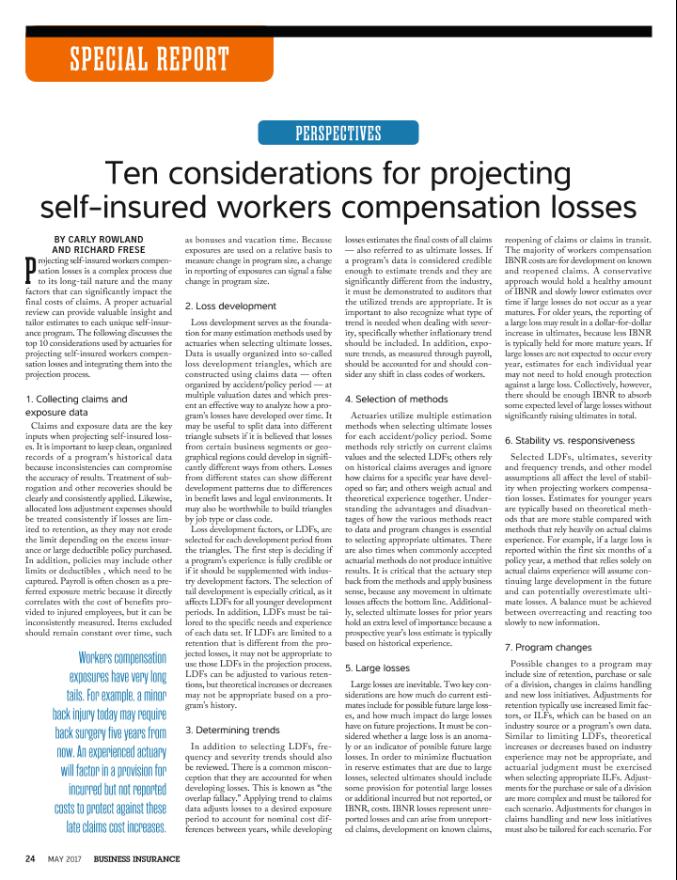Ten considerations for projecting self-insured workers compensation losses

Contenido multimedia no disponible por derechos de autor o por acceso restringido. Contacte con la institución para más información.
| Tag | 1 | 2 | Valor |
|---|---|---|---|
| LDR | 00000cab a2200000 4500 | ||
| 001 | MAP20170016816 | ||
| 003 | MAP | ||
| 005 | 20170619140939.0 | ||
| 008 | 170531e20170501esp|||p |0|||b|spa d | ||
| 040 | $aMAP$bspa$dMAP | ||
| 084 | $a342 | ||
| 100 | $0MAPA20170006299$aRowland, Carly | ||
| 245 | 1 | 0 | $aTen considerations for projecting self-insured workers compensation losses$cCarly Rowland, Richard Frese |
| 520 | $aProjecting self-insured workers compensation losses is a complex process due to its long-tail nature and the many factors that can significantly impact the final costs of claims. A proper actuarial review can provide valuable insight and tailor estimates to each unique self- insurance program. The following discusses the top 10 considerations used by actuaries for projecting self-insured workers compensation losses and integrating them into the projection process | ||
| 650 | 4 | $0MAPA20080586294$aMercado de seguros | |
| 650 | 4 | $0MAPA20080627607$aSeguro de accidentes de trabajo | |
| 650 | 4 | $0MAPA20080629731$aSeguro de accidentes individuales | |
| 650 | 4 | $0MAPA20080567118$aReclamaciones | |
| 650 | 4 | $0MAPA20080579784$aCostes económicos | |
| 773 | 0 | $wMAP20077002240$tBusiness insurance$dLondon : Crain Communications INC., 2006-$g01/05/2017 Número 5 - mayo 2017 , p. 24-25 |

